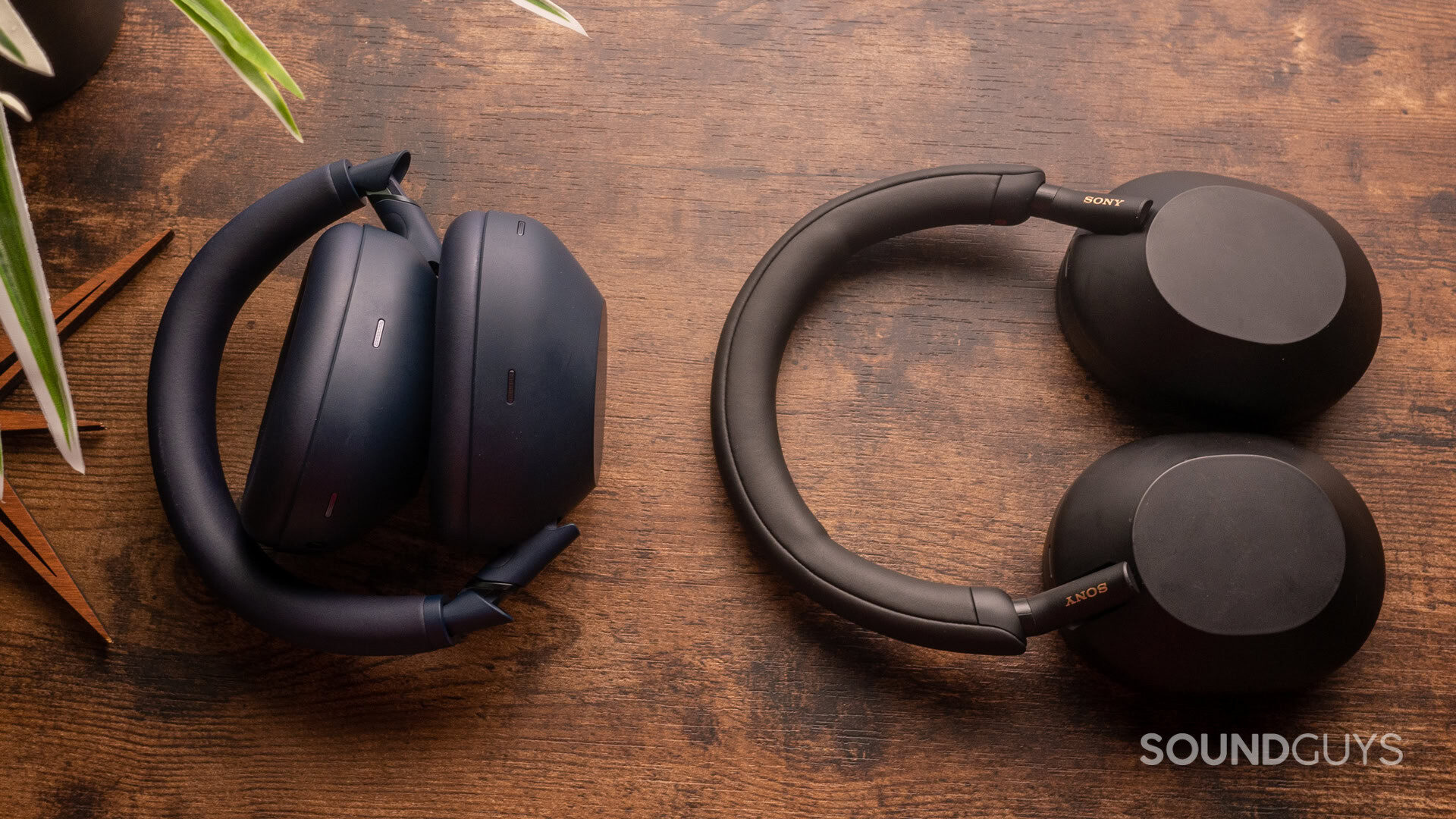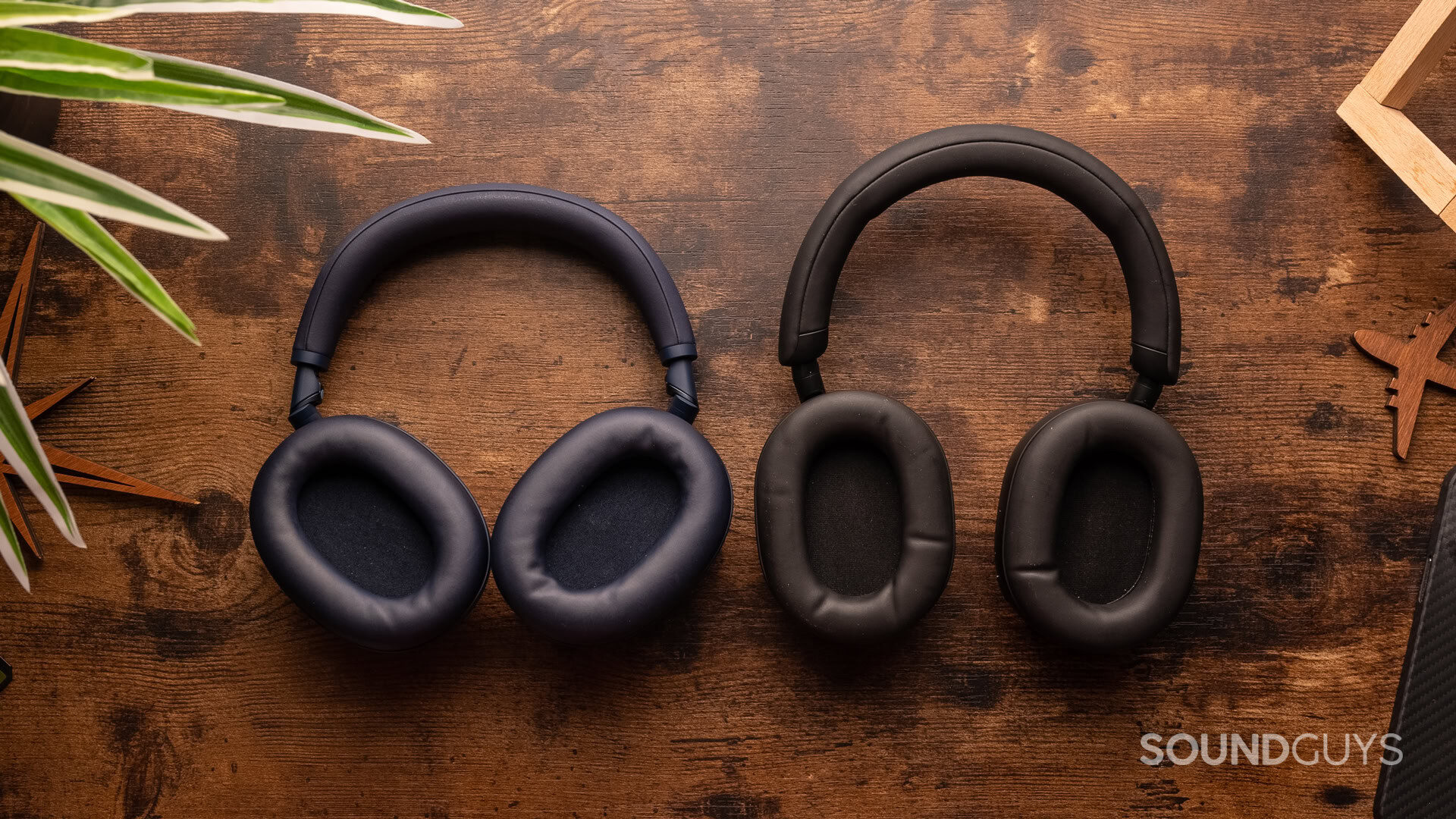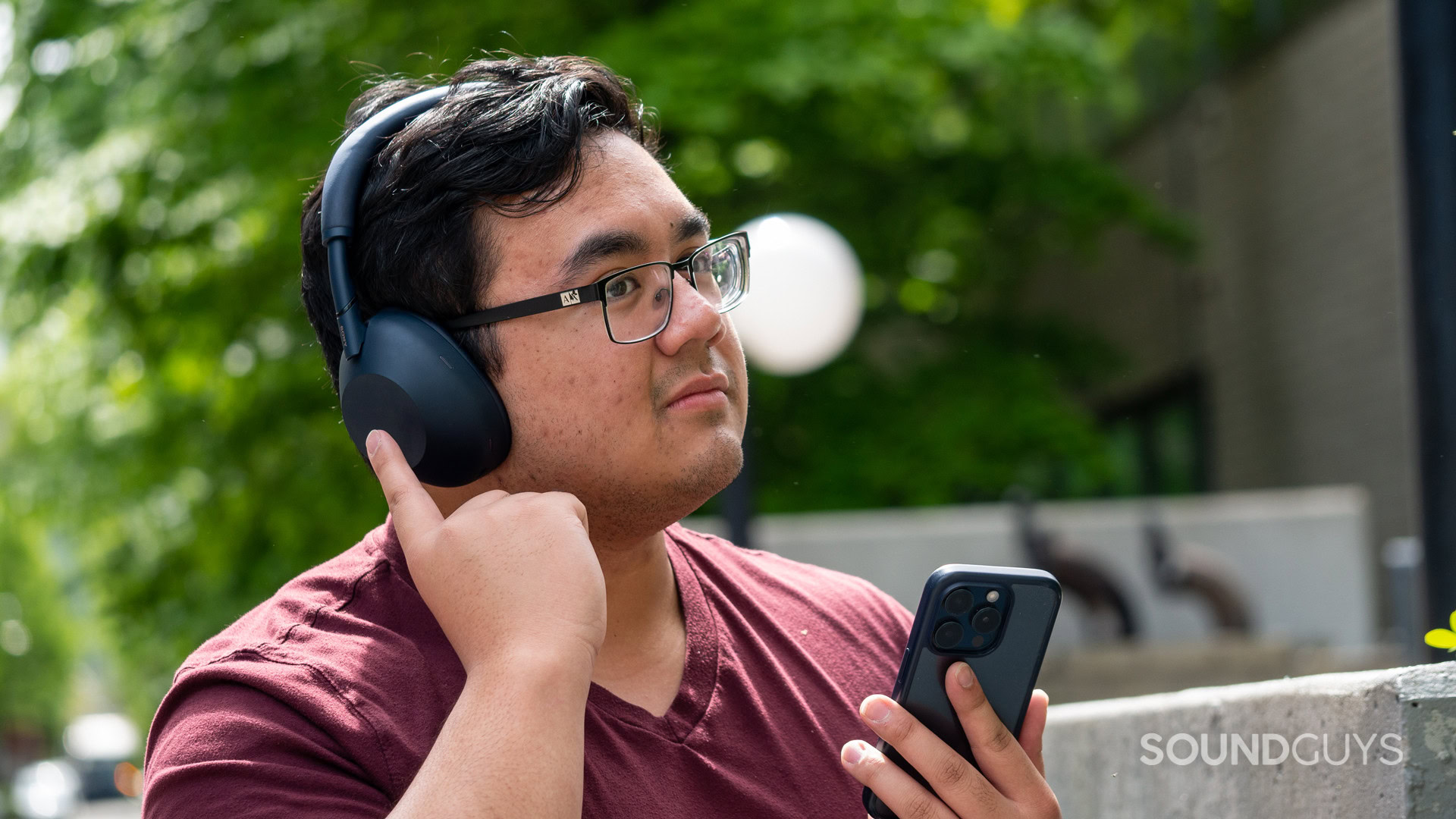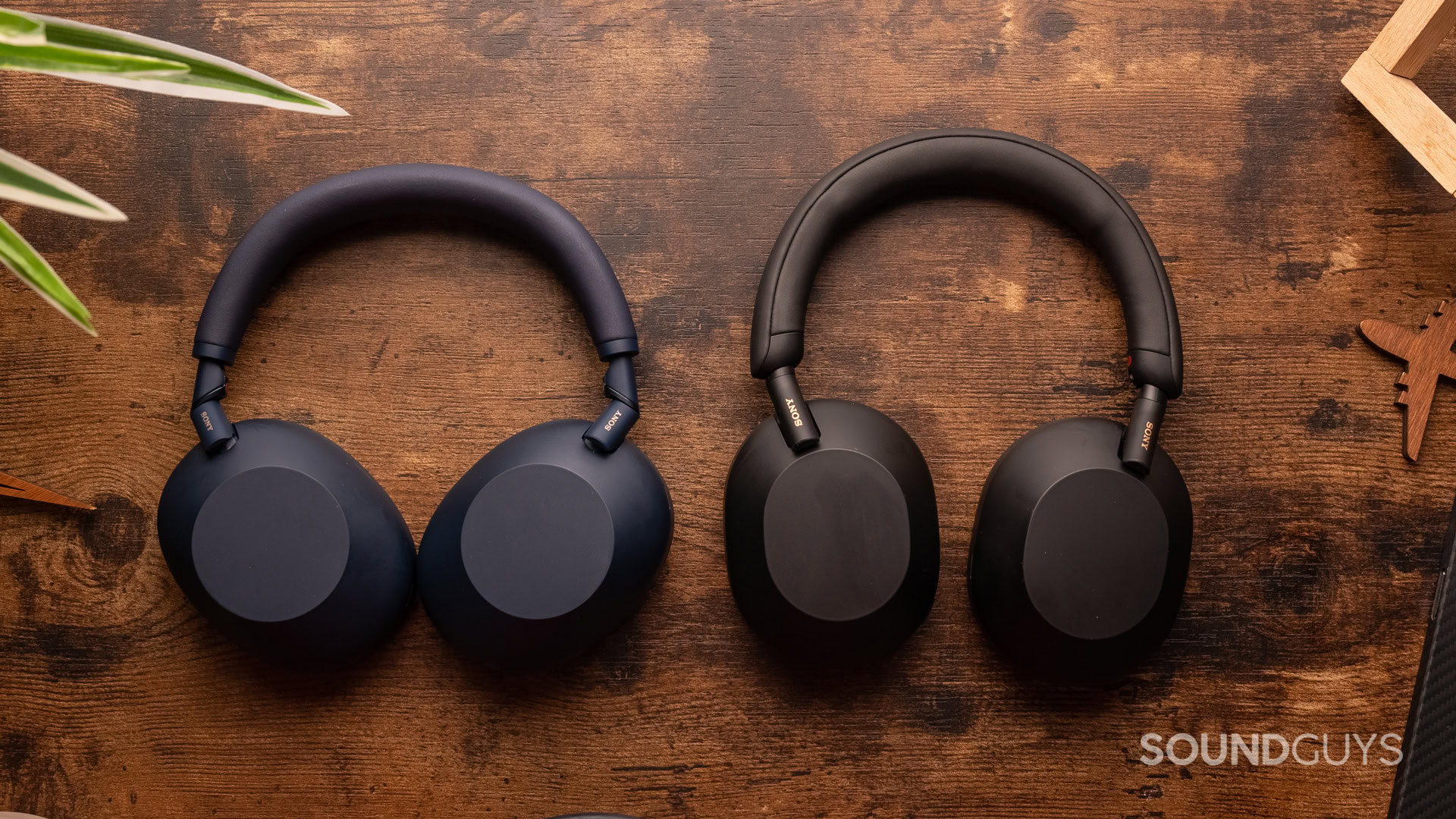All products featured are independently chosen by us. However, SoundGuys may receive a commission on orders placed through its retail links. See our ethics statement.
Sony WH-1000XM6 vs Sony WH-1000XM5: Should you upgrade?
May 15, 2025




Sony’s WH-1000X line of noise canceling headphones has long been a benchmark in the category, frequently topping many of our best lists, and the new WH-1000XM6 takes up the mantle from the popular Sony WH-1000XM5. But are the upgrades meaningful enough to justify buying the new model—or even replacing your current pair, especially given the higher pricetag? After extensive testing, we’ve broken down the differences to help you decide whether the Sony XM6 or the XM5 is the right set of cans for your ears and budget.
This article was originally published on May 15, 2025, and this is the first version.
What’s it like to use the Sony WH-1000XM6 compared to the WH-1000XM5?

At a glance, you’d be forgiven for thinking the XM6 and XM5 are nearly identical. But Sony focused on refining what didn’t work. The WH-1000XM6 finally addresses the fragile hinge design that plagued the XM5, adding a visible metal reinforcement for durability. Plus, the XM6 folds inward like the older XM4, making them more compact for travel—something I personally missed on the XM5, which could only lay flat.
That said, comfort still isn’t where it should be. The XM6’s ear pads feel deflated out of the box, and the earcup depth leaves larger ears cramped. Worse, the ANC mic protrudes slightly inside the cup and can rub against your ear. While removable pads could invite third-party solutions, Sony missed the mark on creature comforts. The XM5, while also not perfect, at least offers deeper and more compliant padding that better accommodates a range of head shapes. Both headphones lack ingress protection, so neither is fit for intense workouts or rainy days.
| INPUT | Right earcup surface |
|---|---|
Double tap | Play / pause |
Long press | Voice assistant |
Swipe up / Down | Volume up / down |
Swipe forward / back | Track forward / back |
Cup hand | Passthrough mode |
| INPUT (touchpad) | ACTION |
|---|---|
Swipe up | Volume up |
Swipe down | Volume down |
Swipe forward | Track forward |
Swipe back | Track back |
Hold (center) | Voice assistant |
Double tap center | Pause / resume |
Cup hand | Ambient sound passthrough |
Do the Sony WH-1000XM6 or WH-1000XM5 have more features?
The WH-1000XM6 carries over nearly every feature from the XM5 and builds on it with better spatial audio capabilities and improved app controls. Through the Sony Sound Connect app, you still get a 10-band EQ, speak-to-chat, head gesture control, and 360 Reality Audio. The XM6 adds the ability to upmix stereo content into spatial sound, which mimics Apple’s Spatialize Sound feature and works surprisingly well.
One feature we were hoping to see come to the XM6 that was missing from the XM5 was wired audio via USB-C. Sure, there is a headphone jack, but the USB connector is already kind of taking its place, so Sony could have killed two birds with one port. You can at least listen to the headset while charging via USB-C now, which was a feature missing from the XM5. On top of that, the XM6 are ready to support Auracast in the future, thanks to LE Audio and LC3 codec support.
How do the Sony WH-1000XM6 and WH-1000XM5 connect?

The XM6 steps up to Bluetooth 5.3 with active support for LC3 and Auracast, making it one of the few mainstream ANC headphones ready for the next wave of wireless broadcasting features. You can tune into shared audio streams in public places (as that infrastructure rolls out), something the WH-1000XM5 lacks. Codec support remains excellent, with LDAC, SBC, and AAC all included. However, there is still no support for aptX, aptX HD, or Snapdragon Sound.
The WH-1000XM5 features Bluetooth 5.2 with the same core codec support (LDAC, SBC, AAC) but lacks the future-ready LC3 and LE Audio features. Both models include a 3.5mm TRS cable for analog listening.
Is battery life better on the Sony WH-1000XM6 or WH-1000XM5?
In our testing, the WH-1000XM6 hit 37 hours and 14 minutes with ANC enabled, besting the XM5’s already strong 31 hours and 53 minutes. This makes the XM6 a more travel-friendly companion, especially with the ability to use them while charging via USB-C — something you couldn’t do with the XM5.
Both headphones offer fast charging, which nets you about 3 hours of playback with just 3 minutes of plugged-in time. While the XM5 technically lasts longer with ANC off (up to 53 hours), the XM6 is more flexible in day-to-day use and better aligned with modern expectations.
Do the Sony WH-1000XM6 cancel noise better than the Sony WH-1000XM5?
Loading chart ...
The XM6 edges out the XM5 in active noise cancelation performance, largely thanks to improved passive isolation. With a good seal, the XM6 reduces ambient noise by up to 87%, compared to the XM5’s still-impressive 84%. This gives the Q3 chip more room to work its magic in the sub-1kHz range, where ANC matters most in everyday scenarios like plane engines or city streets.
The XM5 is no slouch in the ANC department. It still holds its own against top competitors, especially in low-frequency noise cancelation. However, the thinner seal and older ANC processing mean the XM5 simply can’t match the XM6’s total noise reduction under ideal conditions.
Yes, the passthrough mode on the Sony WH-1000XM6 has been improved to let outside noise in more naturally, sounding a little less muffled and filtered than they did with the Sony XM5. However, at least with the beta app we tested, you still cannot adjust the strength of the transparency mode; it is either enabled or disabled.
Do the Sony WH-1000XM6 sound better than the Sony WH-1000XM5?

Yes—without question. The XM6 are the best-sounding Sony WH headphones to date. In my testing, Sony fixed the harsh treble peaks of the XM5 and smoothed out the low-end for a warmer, more listenable experience. You get a touch of low-end lift that adds richness without boom, and no noticeable distortion. It’s a very consumer-friendly sound that works for most genres right out of the box.
By comparison, the XM5’s sound is more V-shaped, with emphasized bass and slightly scooped mids. While still enjoyable, it’s less refined. The treble on the XM5 is brighter—especially around 3kHz—leading to potential fatigue over long listening sessions. The XM6 tones this down for a smoother ride.
Multi-Dimensional Audio Quality Scores (MDAQS)
The XM6 pulls ahead with a 4.8 overall score in our MDAQS testing, with standout marks: 4.9 in Timbre, 4.6 in Immersiveness, and a steady 3.6 in Distortion. These numbers reflect real gains in spatial presentation and detail clarity.
The XM5 scores 4.2 overall, with a 4.3 in Timbre and 4.1 in Immersiveness. The distortion score remains identical, but the differences in immersion and tonal balance are noticeable when listening back-to-back. The XM6 sounds cleaner and more natural, full stop.
- Timbre (MOS-T) represents how faithfully the headphones reproduce the frequency spectrum and temporal resolution (timing information).
- Distortion (MOS-D) represents non-linearities and added noise: higher scores mean cleaner reproduction.
- Immersiveness (MOS-I) represents perceived source width and positioning: how well virtual sound sources are defined in three-dimensional space.
Objective Measurements
Loading chart ...
The WH-1000XM6 follows our house curve a little more closely, adding a tasteful bass lift without drowning the mids, and even providing decent treble extension up to 16kHz. The emphasis is subtle rather than overwhelming. Even with ANC toggled, the frequency response remains impressively stable.
The WH-1000XM5, by contrast, struggles with a more exaggerated V-shaped tuning. The low-end bump is more aggressive, and the midrange takes a hit. That might work for some playlists, but if you want balance, you’ll need to pull out the EQ. Additionally, it rolls off earlier in the treble, which can limit the sense of air and detail.
Do the Sony WH-1000XM6 or WH-1000XM5 have a better microphone?
The XM6 improves on the already excellent XM5 mic system by adding two more beamforming mics (there are now six total) and better AI voice processing. Whether on a crowded street or in windy conditions, I found the XM6 kept my voice more isolated and intelligible without letting in ambient chaos. However, the XM5 still holds up remarkably well, especially outdoors.
If calls are a major part of your daily life, you can trust using either headphone. The XM6 will give you a slight edge in clarity and consistency, but it isn’t a massive difference perceptibly.
Sony WH-1000XM6 microphone demo (Ideal conditions):
Sony WH-1000XM5 microphone demo (Ideal conditions):
Sony WH-1000XM6 microphone demo (Windy conditions):
Sony WH-1000XM5 microphone demo (Windy conditions):
Which microphone sounds better to you?
Sony WH-1000XM6 vs Sony WH-1000XM5: Price and availability
The WH-1000XM6 retails for $449.99 USD—up from the XM5’s $399.99 MSRP. And while the XM6 is newer, the XM5 now frequently dips below $350 during sales, making it the better value option.
Given how incremental the upgrades are, the XM5 is still an attractive buy. You still get elite ANC, great sound, and a feature-rich app. But if you want every ounce of performance, future-ready connectivity, and slightly better physical isolation (minus the padding issues), the XM6 barely justifies the price.
Should you get the Sony WH-1000XM6 or Sony WH-1000XM5?

If you’re starting from scratch and want the best Sony has to offer, the WH-1000XM6 is a smart investment. Its sound quality, ANC performance, Auracast support, and refinements to usability make it the best WH headset yet. However, the lack of USB-C audio and higher quality codecs like aptX does mean it’s not entirely futureproof.
For most users, the XM6 is a better product—but the XM5 remains the better deal.
If you already own the WH-1000XM5, the decision is trickier. The improvements in the XM6 are mostly about comfort tweaks, minor audio gains, and Auracast support. Unless these are pain points for you, there’s no urgency to upgrade. You’re still getting top-tier ANC, great sound, and a polished app experience with the WH-1000XM5.


Outstanding microphone
Useful app features
Thank you for being part of our community. Read our Comment Policy before posting.